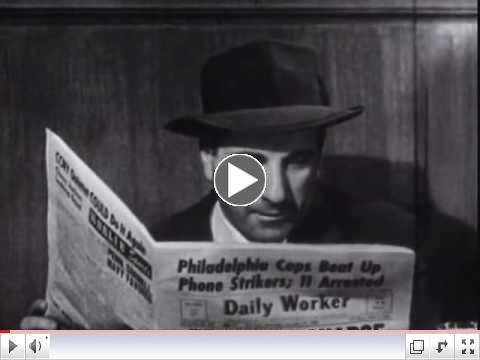|
Engaging in peace: A personal story
By guest author, Dorothy Walsh
 | |
Dot Walsh at Peace Abbey
|
My journey in understanding the importance of peace and nonviolence for the world and for myself began in the aftermath of World War II as I learned about the horrors of the war and the Holocaust.
This experience led to my personal commitment to never be supportive of violent resolution of conflicts.
Traveling and hitchhiking as a student in Europe after the war, I found myself asking every German I met if they had known about the concentration camps and what happened to the Jewish people. No one would answer me except an old woman in a hostel in West Berlin. She said...
Read more...
|
|
Can they call YOU a terrorist?
By Dr. Kathie Malley-Morrison
 | | How to Spot a Communist |
During the Cold War, people--particularly those who called themselves conservatives--often accused individuals they didn't like of being "dirty Commies."
The Senator Joe McCarthy era was a scary time for socialists, liberals, artists, writers--anyone who intimidated the right wing, or made conservatives feel inferior. (A chilling treatment of this era can be found in Barbara Kingsolver's novel, The Lacuna.)
The Cold War is over, but the U.S. government, with the help of the right wing, has given us new epithets for people distrusted by the right wing. You know the label--"terrorist."
Read more...
|
Children and youth peace corner
 | |
Brooke
|
People Who Changed the World By guest author Brooke Anderson, age 11
The book, Paths to Peace: People Who Changed the World, by Jane Breskin Zalben, is about 16 heroes who worked to achieve world peace. One hero inspired many other people to change the world, and his name was Mahatma Gandhi. He led many people on his 200-mile walk to the ocean. Gandhi led his country to freedom by using nonviolent means. He said "We must be the change we wish to see in the world." Martin Luther King, Jr., wanted to change the rule of "No colored people allowed." Soon he did many protests about how blacks and whites should be treated equally. Soon after, many people started taking Martin Luther King's side, and then he said his "I have a dream" speech--and he changed the world. One part from his speech was, "Let freedom ring from every hill and molehill...From every mountain side, let freedom ring." |